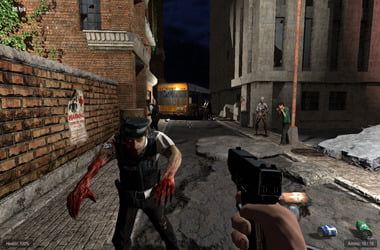
‘If you stand straight,
do not fear a crooked shadow’
Chinese Proverb
Although accurate shadows create a more realistic lighting effect in your games, they often affect your FPS, thus decreasing your game performance. As a result, your game becomes literally unplayable, which makes you feel down. So, if you are a passionate gamer, it is time for you to know how to boost FPS on Windows 10.
What is FPS?
First and foremost, let’s figure out what we are dealing with. As pertains to gaming, FPS, which stands for “frames per second”, is a measure of a video game graphics performance. FPS indicates how many consecutive images (frames) appear on your monitor each second. Obviously, the higher your FPS, the better: this way your game becomes more realistic and therefore enjoyable. If your FPS is low, your gaming experience leaves a lot to be desired: what you are playing is more like a slideshow and may even stutter, freeze or crash.
Why do shadows eat into your GPU and decrease your FPS?
There are many reasons why your FPS can go low. Among them are shadows that serve to contribute to the aesthetics of video games. Thanks to shadows, environments become immersive and games look more natural and captivating. However, as you can see, that comes with a price that you pay in FPS. The point is, rendering shadows in games requires complicated calculations of what objects should be obscured and how to achieve that in the best way possible – your PC is supposed to actually slave away to do the job. Indeed, such computations are a real challenge: rendering shadows drains your GPU and puts a lot of stress on your computer.
How to resolve GPU-related issues caused by shadows?
GPU-intensive shadows might become a problem for anyone. If too many shadows are being casted at some moment, your game may crash or freeze even if you are running it on a really powerful machine. Gaming computers are less affected by such issues since they are designed to cope with highly demanding games running on maximum settings, but such devices are extremely expensive, so we think it is unfair to advise you to switch to a gaming computer to enjoy realistic shadows while playing some exciting masterpieces. So, it is more reasonable to set low shadows to keep your games playable.
How to enable low shadows in games on Windows 10?
To get a decent frame rate, you should configure you shadows to their lowest settings. There is no need to worry: that tweak will not make your game look ugly. You will be able to enjoy it as much as you did or even more – thanks to a noticeable FPS boost. With this in mind, use the instructions below to enable your game to run more smoothly:
- Launch the game you are having issues with. If it is an online game, make sure you are connected to the Internet and your connection is fast and stable.
- In the menu of the game, navigate to Options, Game Options, or Settings (whichever is present) to open the game’s settings.
- Now you should locate where your Video settings are. In most cases, they are called just Video. So, click the corresponding link or tab.
- You should also check the Graphics option if it is present – in some games, shadow settings are part of the graphics menu.
- If you can see the option called ‘Quality’, set it to Low. This might be the easiest way to decrease your overall graphics settings and improve your FPS.
- If you can see neither the Quality option nor the Shadows setting, search for the link which is called Advanced, Advanced settings, or something like this.
- Now you should see the Shadows option. Turn shadows off. If that is not possible, set this feature to the minimum level.
Save your changes, start playing your game and see how things go. Hopefully, your performance issues have disappeared.
Other ways to get a boost in your FPS
If you are still not satisfied with what you see, consider updating your graphics card driver. The easiest method to do that implies using a special tool like Auslogics Driver Updater. This way all your driver issues will be fixed automatically, which is sure to boost your system performance.
That said, you are free to update your graphics card driver manually. You can search for the software you need yourself or employ Device Manager to do the job for you. Here is how you can use the tool in Windows 10:
- Right-click on your Start Menu icon.
- Select Device Manager from the menu.
- Locate your graphics card. Right-click on it.
- Choose the Update driver option.
- Select what is called ‘Search automatically for updated driver software’.
After updating your graphics card driver, restart your PC. Then launch your problematic game and check if that driver-related manoeuvre has brought the result you desire.
If you see that your gaming experience is still not at its best, do not worry. In a situation like this, you can recruit optimization software to tune your system to maximum performance. As such, if you crave a much faster and more powerful computer, download and install Auslogics BoostSpeed. This program will leave no stone unturned to improve your PC performance. After running the tool, launch your game and see the difference.
Has enabling low shadows in games increased your FPS? Please share your experience in the comment section below!






 Done! Great to see you among our subscribers!
Done! Great to see you among our subscribers!